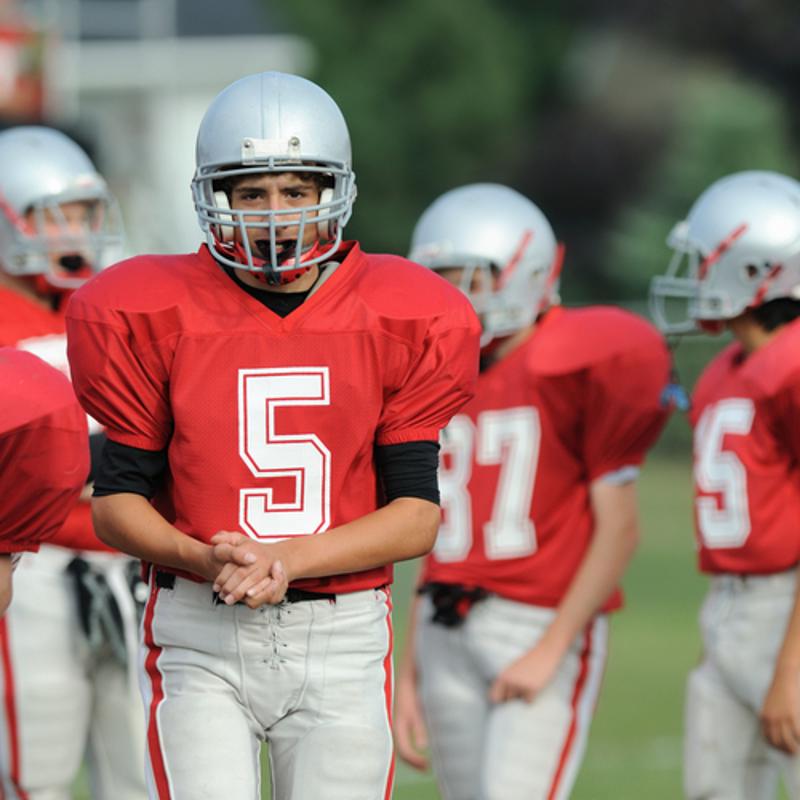As a travel nurse or therapist, it's likely you've heard of CTE, or Chronic Traumatic Encephalopathy. Discussion of this degenerative brain disease has increased in recent years, due to advancements in research and the high-profile controversy that surrounds its incidence in NFL players.
Read on to learn more about CTE and the latest news concerning research into the disease:
A gradual deterioration of brain matter
CTE is characterized by the gradual degeneration of the brain due to repeated hits to the head. While CTE can be caused by concussions, scientists believe it is more likely caused by repetitive subconcussive blows to the head sustained over many years.
 Some a
Some aA landmark study by the CTE Center at Boston University identified CTE in 99 percent of of the donated brains of NFL players researchers examined. The disease was also found to be present in 91 percent of college football players and 21 percent of high school football players.
"The fact that we were able to gather so many instances of a disease that was previously considered quite rare, in eight years, speaks volumes," said study co-author and CTE Center Director Ann McKee. "There's just no way that would be possible if this disease were truly rare."
Subconcussive hits are those that do not cause immediate symptoms. Athletes and military personnel are most at risk for developing CTE because of these disciplines' high frequency of head impacts. In a single college football game, an offensive lineman can experience 62 subconcussive hits, according to The New York Times. Over a course of a career, this can add up to thousands of damaging head impacts.
Late-onset symptoms
Repeated blows to the head can snap neuron connections in the brain. When this happens, the broken connections release a protein called tau into the rest of the brain, killing brain cells as it multiplies, the Concussion Legacy Foundation explains.
In individuals with CTE, high deposits of tau have been found in the areas of the brain responsible for memory, mood and cognitive function. As a result, symptoms of CTE include aggression, behavioral issues, memory loss, depression, confusion and learning difficulties. However, CTE symptoms often do not manifest in affected individuals until years or even decades after the last head impact. Early symptoms typically appear in the late 20s or 30s, according to the CLF.
High youth risk
Children are at a greater risk of developing CTE than older athletes. Studies have shown that head impacts sustained prior to age 12 is linked with worse outcomes than those sustained after age 12, according to the CLF. In addition, longer sports careers are associated with a higher risk for CTE, making individuals who started playing sports earlier especially vulnerable to the disease.
For example, Tyler Sash, a player for the New York Giants, was just 27 years old when he died from an accidental overdose of pain medications in 2015, but had played football since he was 11, according to the Times. He had sustained several concussions over his football career, and had begun acting out of character, with bouts of anger and confusion. Because of these behavioral changes, his family asked researchers to examine Sash's brain for C.T.E. Ultimately, they found he did indeed have the disease.
"Children are at a greater risk of developing CTE than older athletes."
"Even though he was only 27, he played 16 years of football, and we're finding over and over that it's the duration of exposure to football that gives you a high risk for C.T.E.," said Dr. Ann McKee, director of the CTE Center at Boston University, in an interview with the paper. "Certainly, 16 years is a high exposure."
A culture of 'toughing it out'
Some medical experts and athletes point to the attitude of "toughing it out" on the field as a contributing factor to the incidence of CTE. Athletes may feel that speaking up after suffering a disorienting blow to the head will have them benched or seen as weak, or they may try to ignore their pain or confusion so as not to let their team down.
Just take to heart the words of Molly Tissenbaum, a Harvard University hockey player who has had multiple experiences of head trauma and who has pledged to donate her brain to the CTE Center:
"I don't want to watch any more of my teammates suffer in silence because they are afraid to speak up about their concussions in fear of lost playing time, or worse, for fear of being labeled soft or selfish … The culture of playing through concussions needs to stop."
Recent progress in CTE research
A major obstacle to better understanding CTE is that there is as of yet no known way to identify CTE in living individuals. However, there is hope that that may change.
The researchers at BU published a report in September detailing that they have observed a protein in spinal fluid, CCL11, that is associated with CTE, the Boston Globe explained.
"I feel like we're turning a corner here and really moving closer to a solution," said McKee in an interview.
If the finding is conclusive, it may lead the way for the development of tests for CTE in living individuals, marking major progress in doctors' understanding of the condition.

